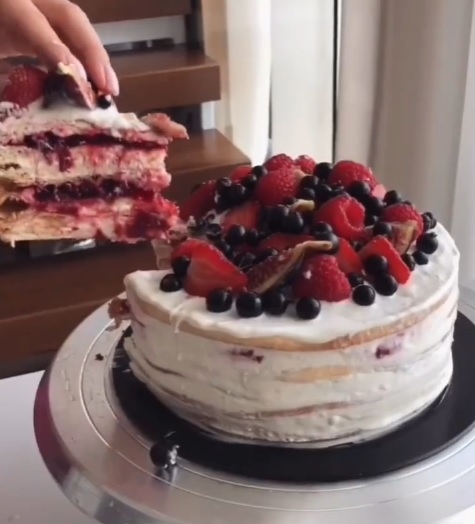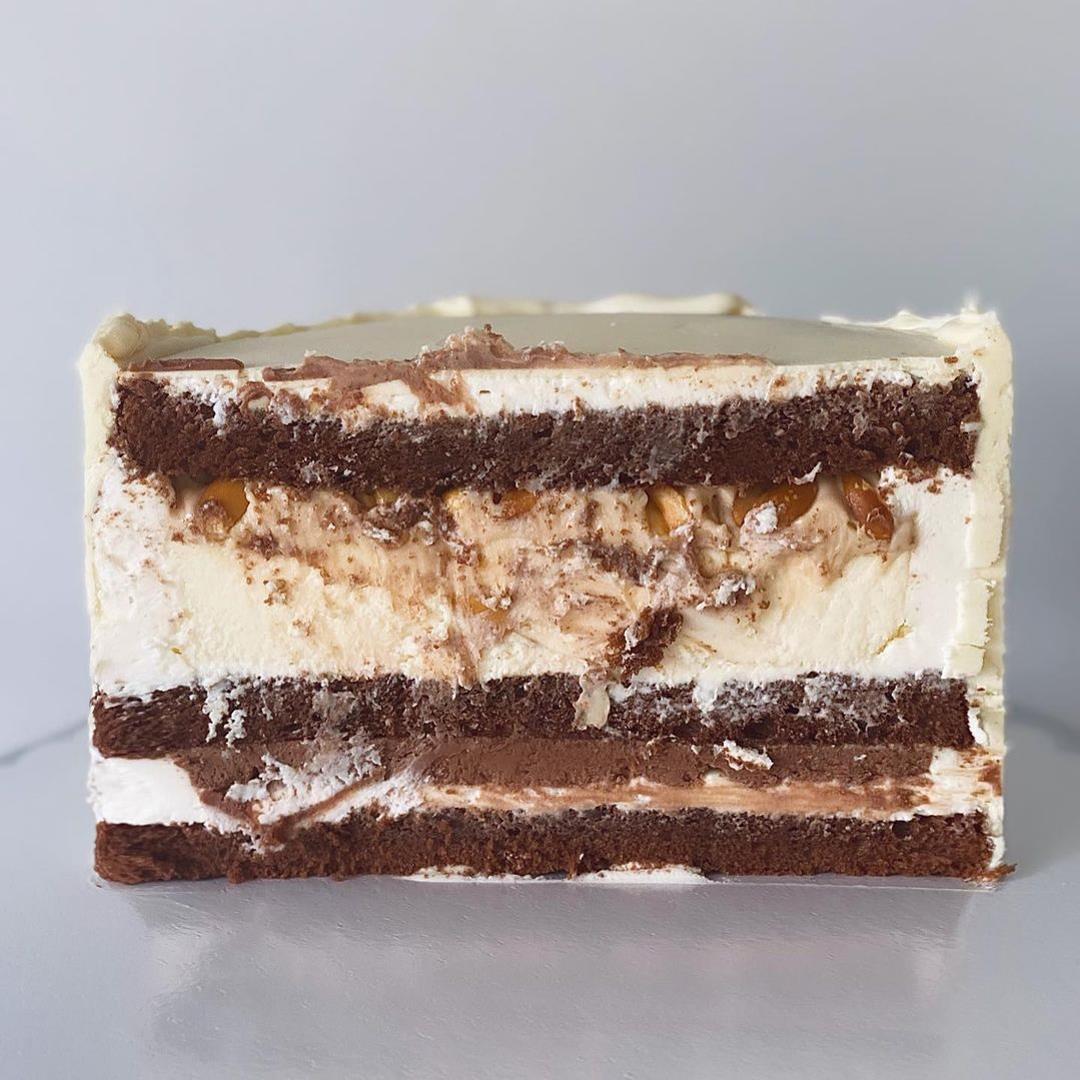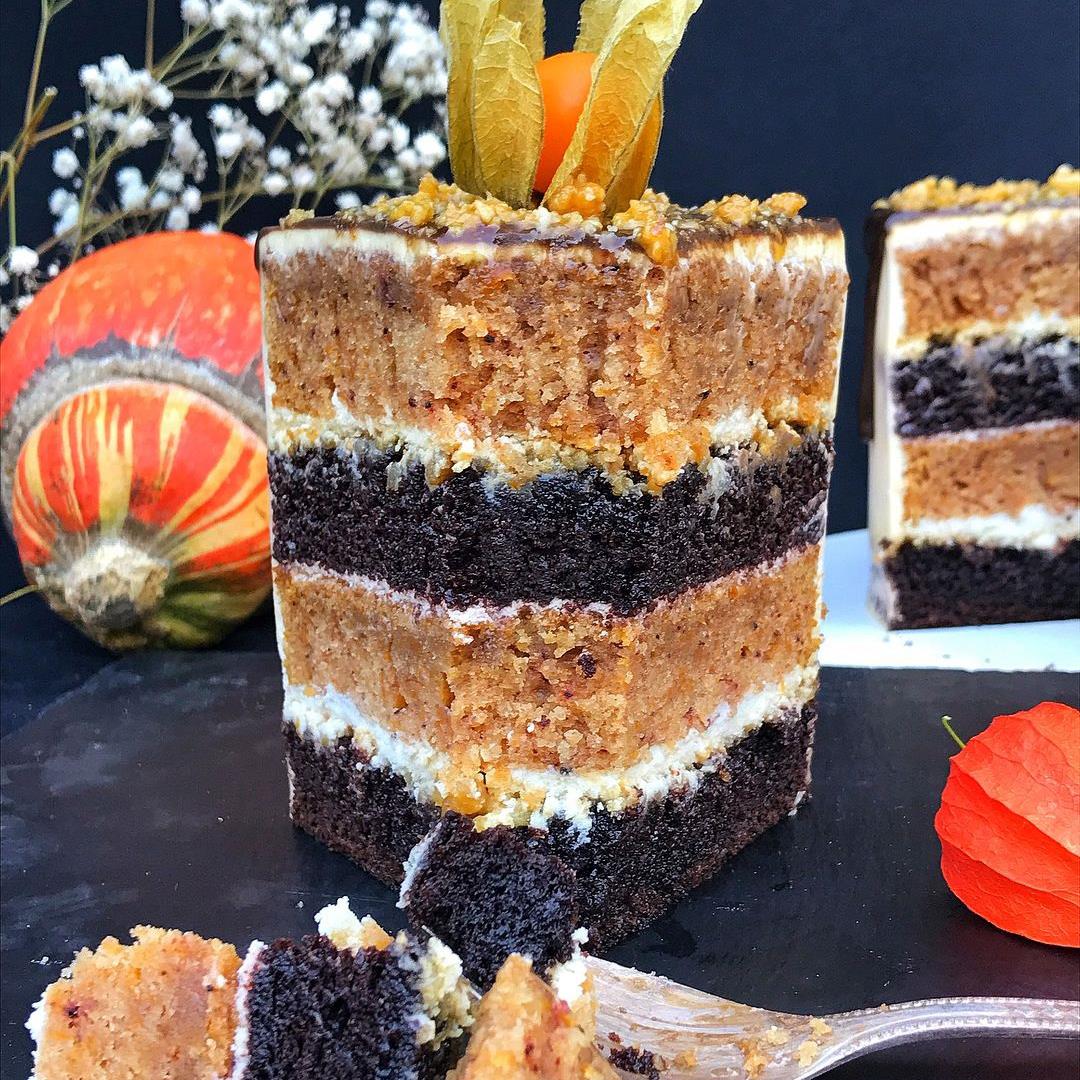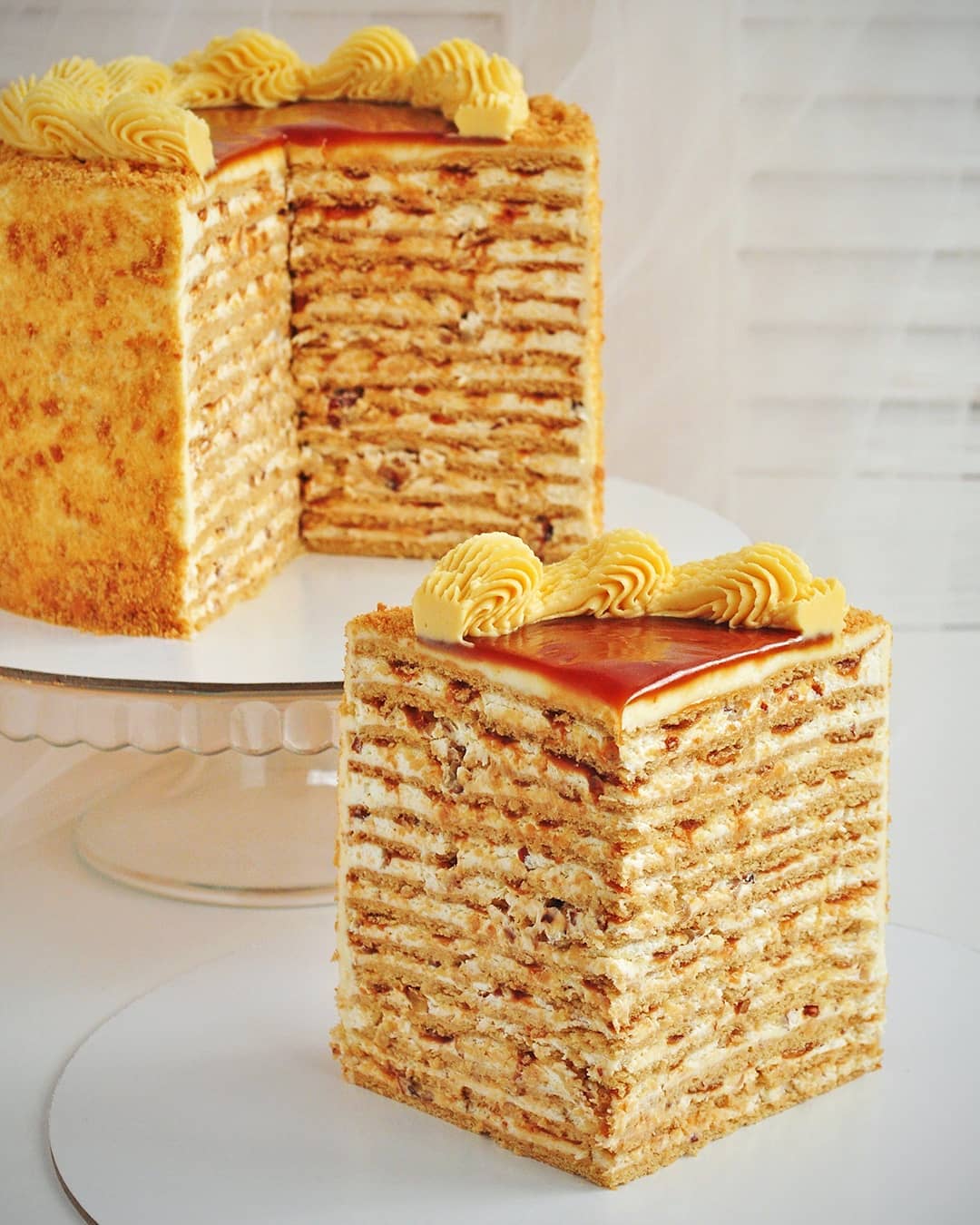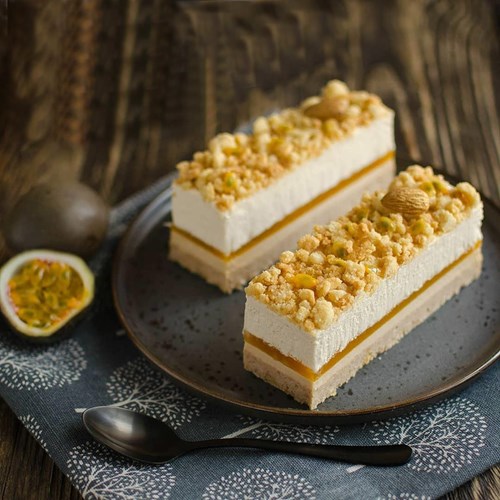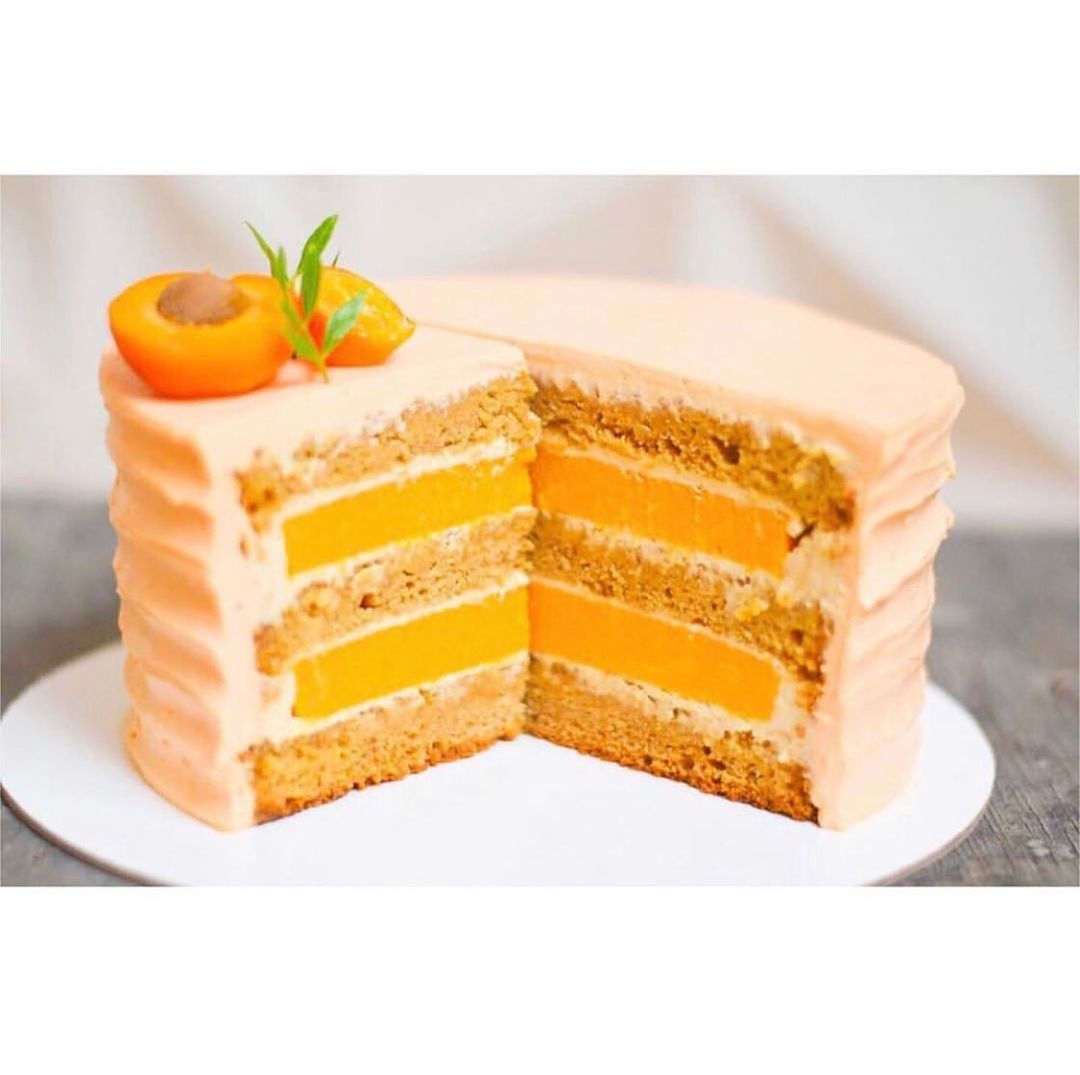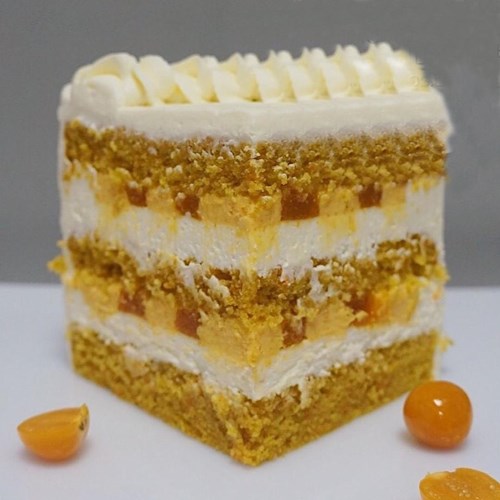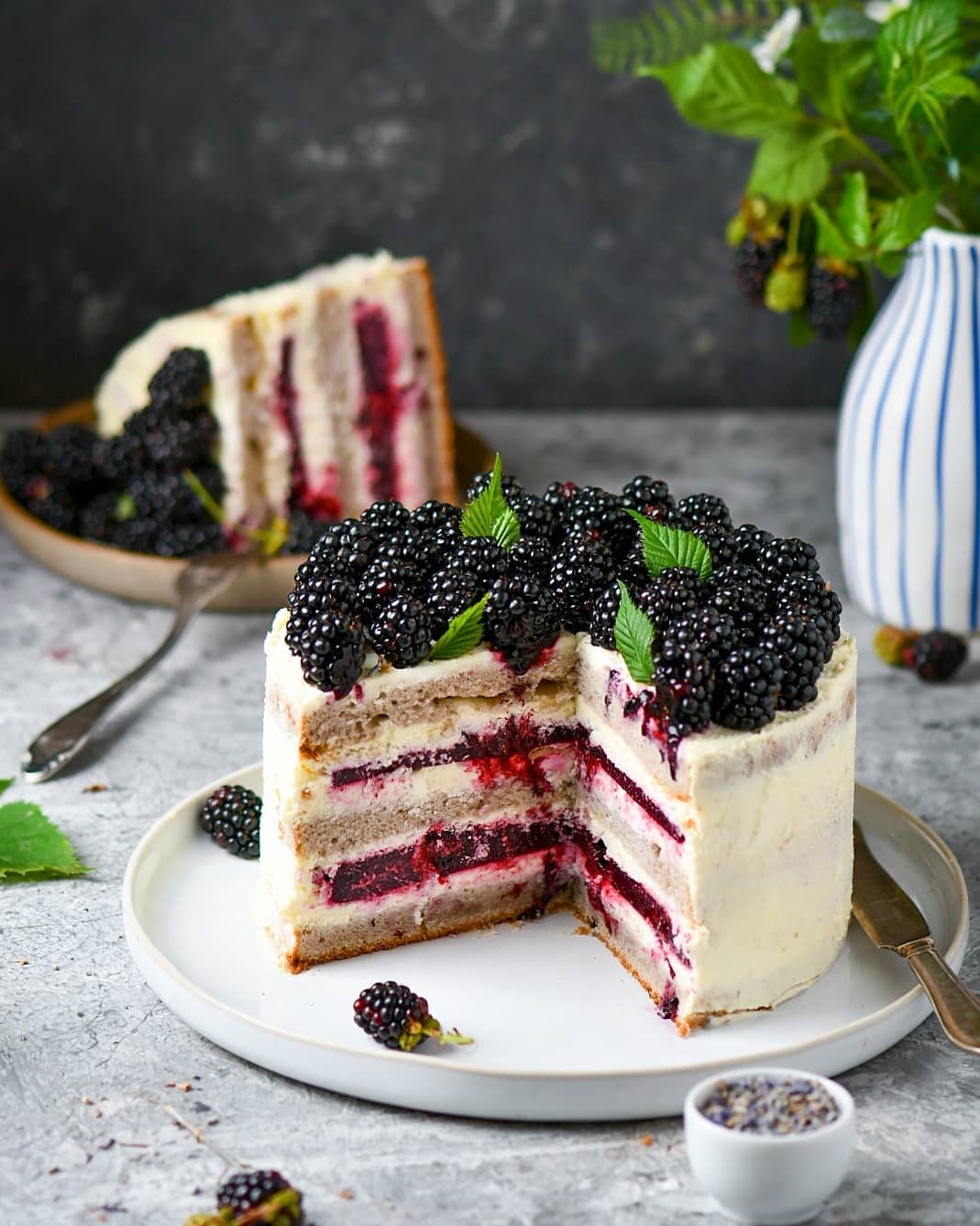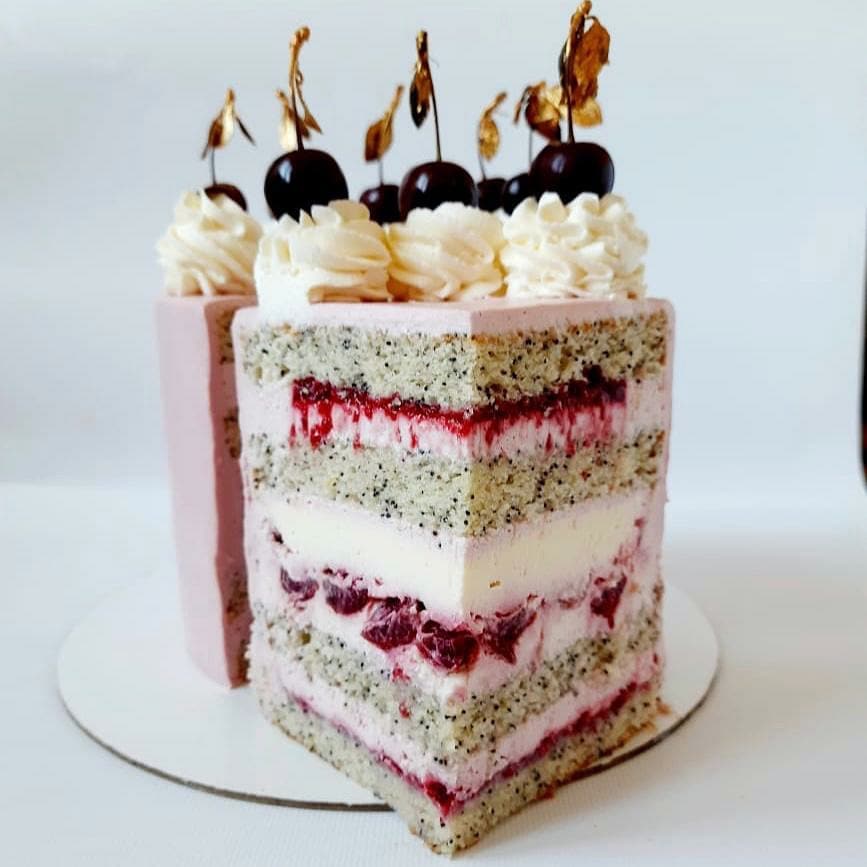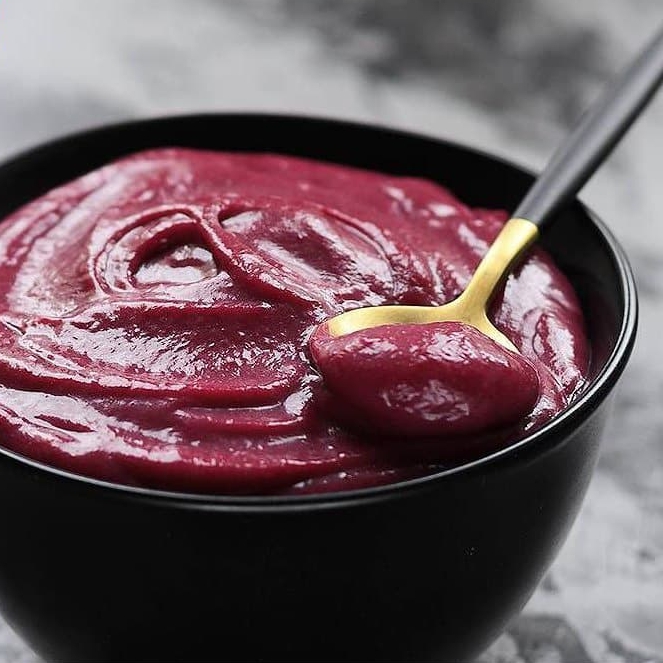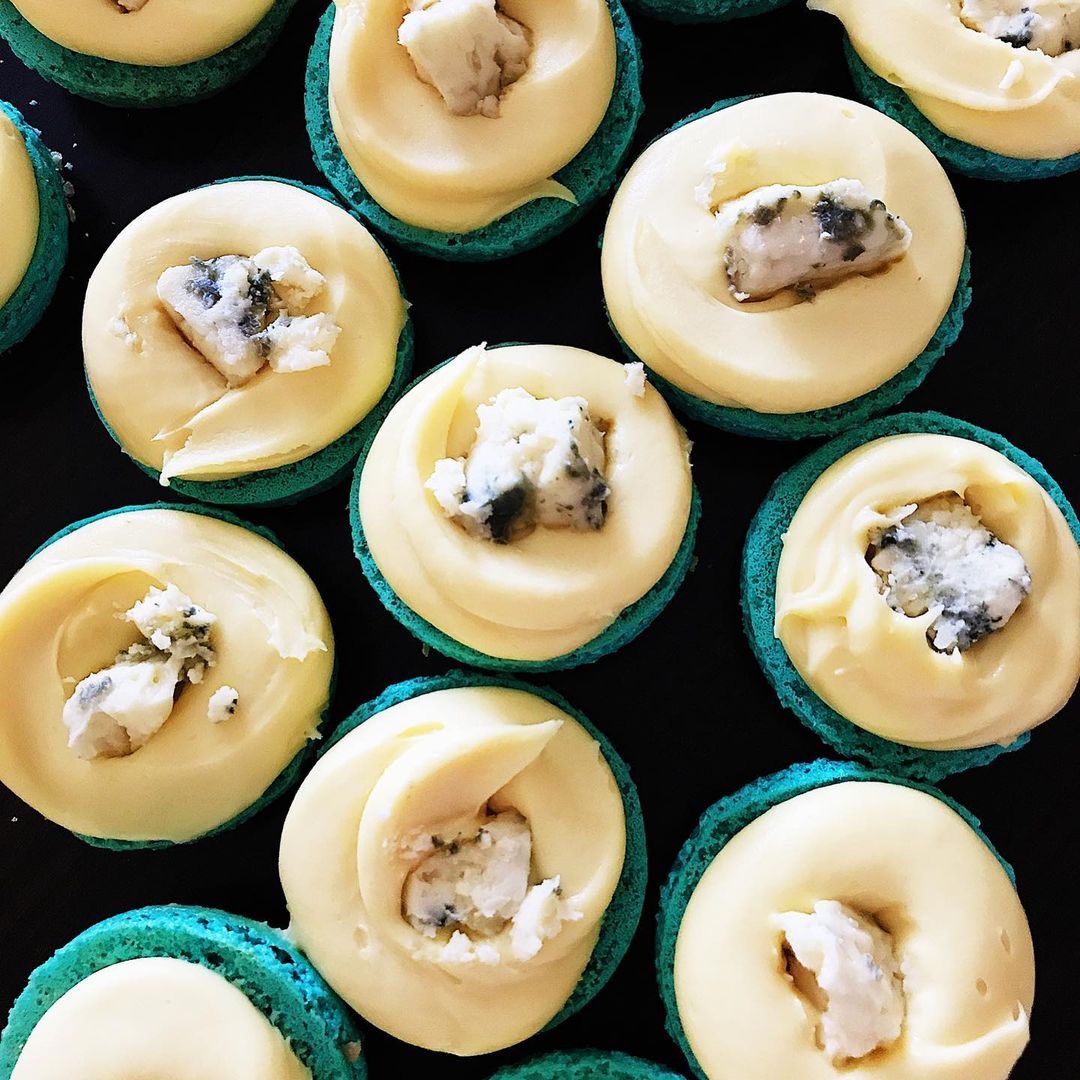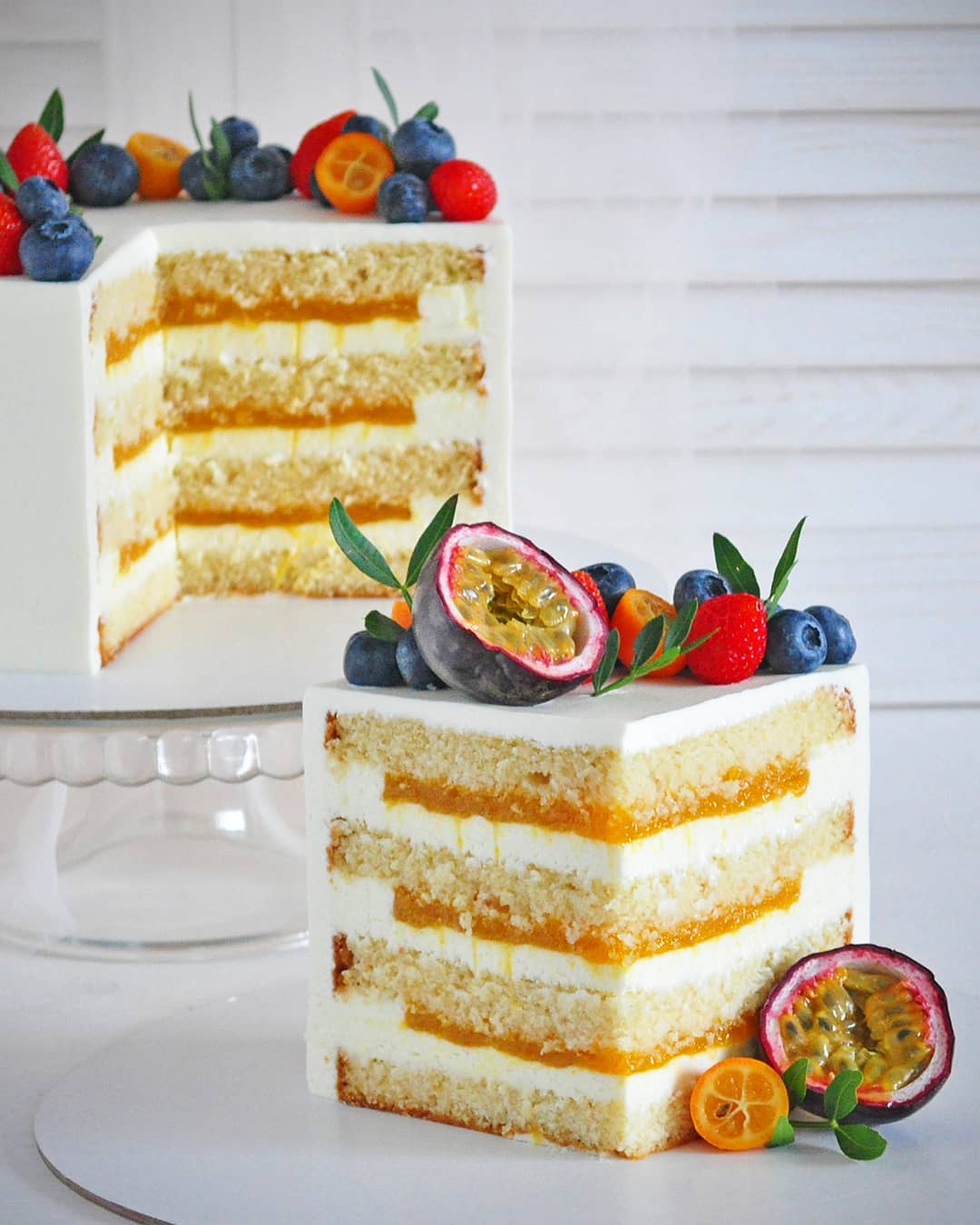Ingredients
Pastry
Cream
Instructions
Step 1
1. Recollecting fond memories: Recently, I saw a sour cream cake on the menu of a cafe, and it brought back so many good memories! When I started baking, this cake was ordered most often. But then, high and perfectly smooth sponge cakes became fashionable, and the sour cream cake fell out of favor. Unfortunately, I completely forgot about it. But I do feel this is undeserved, because to me this is one of the most delicious cakes. Be sure to give it a try! The recipe is very simple!
Step 2
2. Prepare the dough: Mix everything except for the flour in a large bowl. Gradually add the flour and stir. The dough should almost stop sticking to your hands, allowing you to roll out the cake layers.
Tip: If the dough is too sticky, add small amounts of flour until you achieve the right consistency.Step 3
3. Chill the dough: Once the desired amount of flour is added, place the dough in the fridge for a couple of hours. This helps in rolling it out later.
Tip: Chilling the dough makes it easier to handle and roll out into thin layers.Step 4
4. Roll out and bake: Roll the dough into thin layers (the thinner, the tastier!). Pierce with a fork and bake at 200°C (390°F) for a few minutes until golden brown.
Tip: Keep an eye on the layers as they bake quickly. Thin layers result in a crispier texture.Step 5
5. Prepare the cream: Mix the sour cream and sugar, and let it sit until the sugar dissolves. Mix again just before assembling the cake.
Tip: Mixing and letting it rest ensures the sugar fully dissolves, making the cream smooth.Step 6
6. Assemble the cake: Layer the baked pastry with the prepared cream. Put the cake in the fridge overnight to soak.
Tip: Allowing the cake to rest overnight ensures the flavors meld together beautifully.Step 7
7. Optional filling: I also used cherry confit in the filling which I really liked, but some people said the taste was too strong. You can add any confit, jam, or similar fillings if you wish.
Tip: Experiment with different fillings to find your favorite combination.Servings
Equipment
Ensure it's large enough to comfortably mix all of your ingredients without spillage.
A smooth rolling pin will help you achieve those perfect, thin pastry layers.
A well-sized baking sheet is your best friend for baking even layers; use parchment paper to prevent sticking.
For piercing those pastry layers, a standard fork will work perfectly.
This is critical for letting the dough set and the cake soak overnight, so ensure you have enough space.
Variations
Faq
- How do I know if my dough has enough flour?
Your dough should almost stop sticking to your hands and should be easy to roll out without tearing.
- How thin should I roll out the cake layers?
The thinner, the tastier! Aim for a few millimeters in thickness for best results.
- Can I use a stand mixer instead of mixing by hand?
Absolutely! A stand mixer can save you time and effort when mixing the ingredients.
- Is it necessary to refrigerate the dough before baking?
Yes, chilling the dough helps to firm it up, making it easier to roll out thin layers and get a better texture.
- Can I substitute the sour cream with a different ingredient?
For a similar texture and tangy flavor, you can use Greek yogurt as a substitute for sour cream.
- How can I ensure my cake layers bake evenly?
Preheat your oven and bake on the middle rack to promote even heat distribution. Rotate the baking sheet halfway through if necessary.

